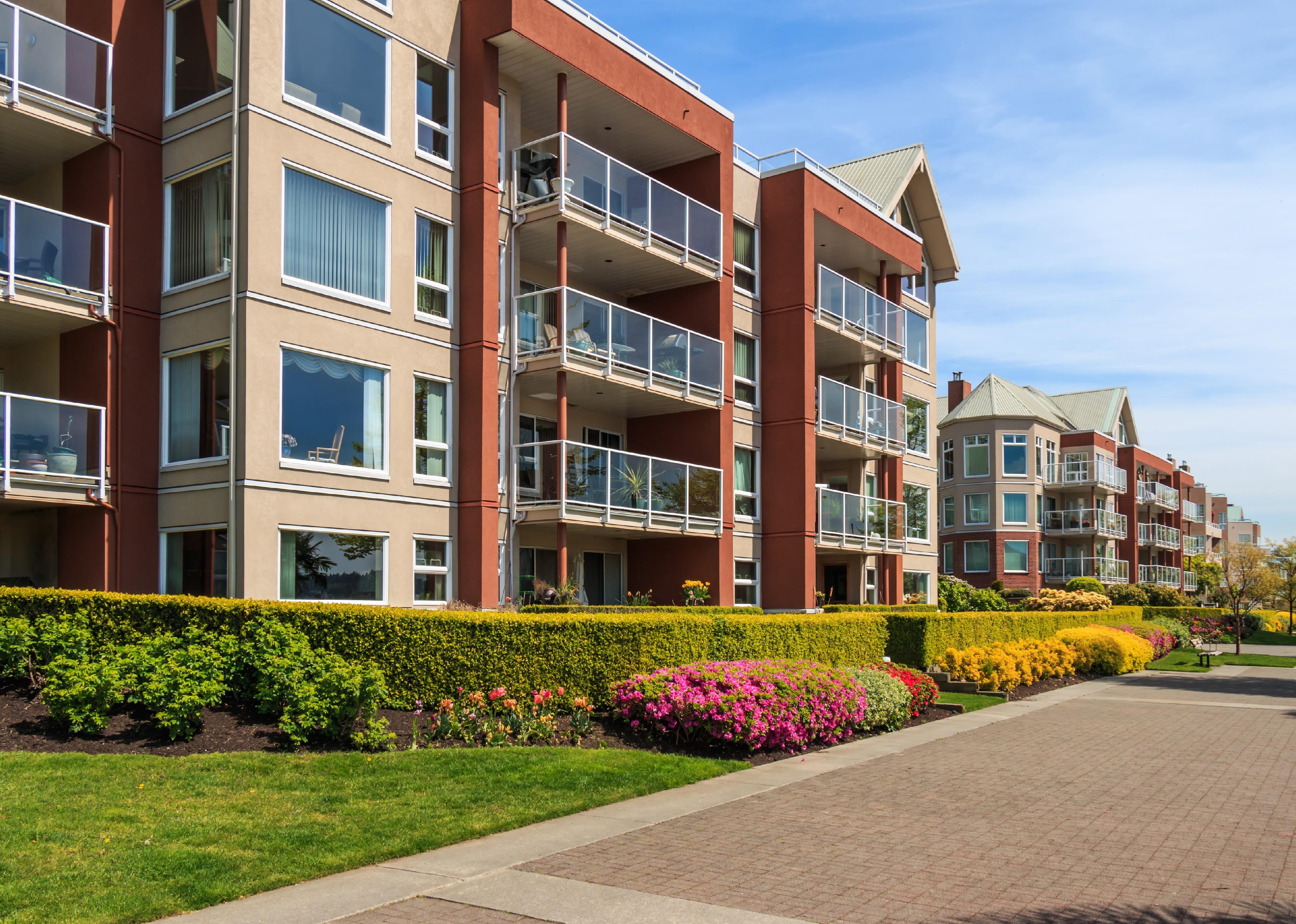
States with the best housing policies for renters during COVID-19
States with the best housing policies for renters during COVID-19
The Coronavirus Aid, Relief, and Economic Security (CARES) Act passed in March included a four-month moratorium on evictions that shielded 12 million renters from being thrown out of their residences. On July 24, that moratorium expired—just as the federal government's supplemental $600 unemployment benefit ended as well.
The result is a looming calamity in which 20% of the 110 million Americans who live in rental households will be vulnerable to eviction by the end of September. To make matters worse, renters will still owe any rental payments that they deferred during the moratorium regardless of whether they are eventually evicted.
It's unclear as of now how or when the federal government will step in with another relief plan for renters who are desperate for assistance. If relief is nonexistent, or even delayed, the states where those struggling renters live will play a critical role in how well they endure this crisis.
Using data from Eviction Lab's COVID-19 Housing Policy Scorecard, Stacker ranked the 50 states and Washington D.C. based on housing policies each state has enacted for renters during the COVID-19 crisis. States are ranked by Eviction Lab's total score for each state out of 5.00 possible points and further ranked by the number of policies each state has implemented. The list is ranked in ascending order from states with the fewest housing protections to states with the most housing protections. Each slide also includes the state's rental population, an overview of the state's current policies, and a link to the state's Eviction Lab's profile with its specific policy information. Eviction Lab's scoring methodology can be found here, and the organization updates its data as policies change. Data on median monthly rental prices are from Experian and reflect the second quarter of 2019.
States in which rent is lower dominate the early part of the list, where housing protections are the thinnest. According to Experian, states with a higher median monthly rent also tend to have a higher median income. Conversely, states later in the list that have the most stringent housing protections are typically those states where both rent—and, therefore, usually income—is higher.
Some pandemic-based housing protections were court-mandated. Others were the result of executive action or legislation—but not all protections are created equal. Eviction Lab's scoring system lends greater weight to so-called "high-impact" housing protections, like eviction moratoriums, which offer the most relief.

#48. Nebraska (tie)
- Total score: 0.00
- Renting population: 567,089
- Last updated: July 7, 2020
- More information and policy descriptions
- Policies implemented: none
With a median monthly rent of $1,062, Nebraska is one of the more inexpensive states in which to rent a property. Even still, a wave of evictions is soon likely—Nebraska’s prior eviction limits have expired, and the state has not taken any further action to protect renters.

#48. Alabama (tie)
- Total score: 0.00
- Renting population: 1,434,431
- Last updated: June 9, 2020
- More information and policy descriptions
- Policies implemented: none
Alabama also faces widespread evictions if the state doesn’t take any further action—the governor issued an order suspending eviction enforcement that expired on June 1. The state does not prevent landlords from evicting tenants, even if they face COVID-19-related hardships. Alabama is one of just nine states with a three-digit median rent—$989 per month, to be exact.

#48. Missouri (tie)
- Total score: 0.00
- Renting population: 1,810,957
- Last updated: May 6, 2020
- More information and policy descriptions
- Policies implemented: none
Missouri renters—with a median monthly rent of $945—pay even less than residents of Alabama. Unlike Alabama, however, lawmakers in Missouri never passed any statewide policies to protect renters throughout the entirety of the pandemic.

#48. South Dakota (tie)
- Total score: 0.00
- Renting population: 240,172
- Last updated: April 19, 2020
- More information and policy descriptions
- Policies implemented: none
Only slightly less affordable than Missouri is South Dakota, where the median monthly rent is $968. Like Missouri, the issue in South Dakota isn’t that protective measures for renters have expired but that state officials never enacted any pro-renter mandates in the first place.
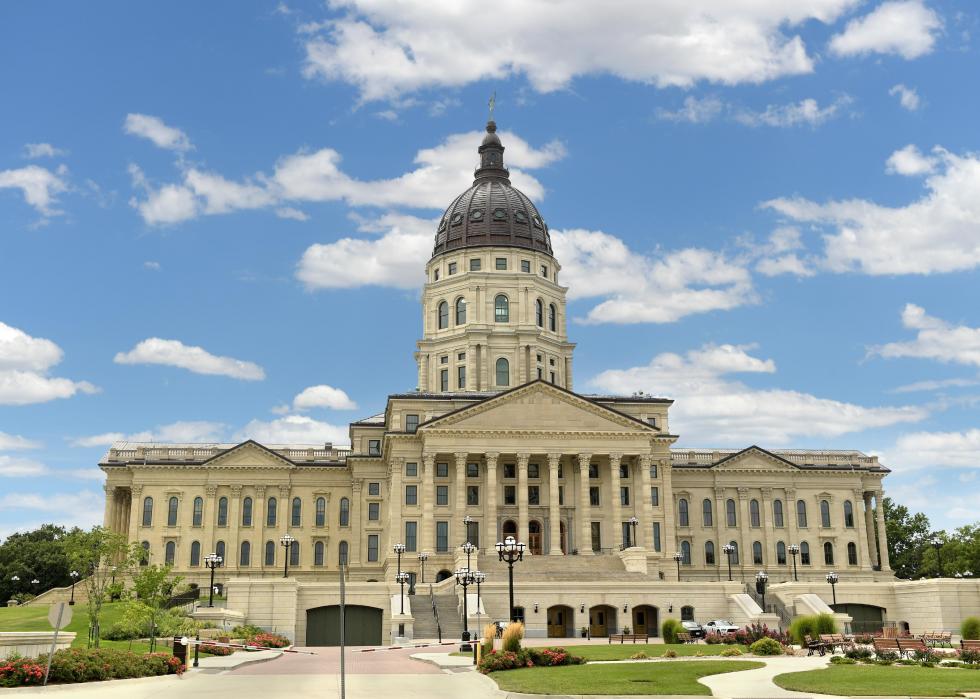
#45. Kansas (tie)
- Total score: 0.00
- Renting population: 871,031
- Last updated: June 3, 2020
- More information and policy descriptions
- Policies implemented:
--- No utility disconnection
With a median monthly rent of $944, Kansas renters also enjoy a spot among the nine least-expensive states for rental properties. What they don't enjoy is a myriad of housing protections from their state government during the COVID-19 pandemic. Orders against landlords disconnecting utilities being the exception, renters in Kansas are on their own.

#45. Louisiana (tie)
- Total score: 0.00
- Renting population: 1,502,811
- Last updated: June 18, 2020
- More information and policy descriptions
- Policies implemented:
--- No utility disconnection
Renters in Louisiana did benefit from an executive order that briefly paused some parts of eviction court proceedings; however, that order expired, and the protections were lifted. Filings, hearings, and evictions can proceed in the state, and an order against disconnecting utilities is all that remains. The median monthly rent in the state slides into the four-digit category at $1,110.

#45. Texas (tie)
- Total score: 0.00
- Renting population: 9,601,665
- Last updated: May 26, 2020
- More information and policy descriptions
- Policies implemented:
--- No utility disconnection
Compared to the nation as a whole in terms of rental costs, Texas is close to the middle with a median monthly rent of $1,359. Like Louisiana, Texas initially limited eviction proceedings, but those orders expired in May, and the courts refused to pause eviction hearings. The only policy implementation still currently in effect is a ban on utility disconnection.

#43. Tennessee (tie)
- Total score: 0.00
- Renting population: 2,118,314
- Last updated: June 17, 2020
- More information and policy descriptions
- Policies implemented:
--- No utility disconnection
--- Free utility reconnection
Tennessee has issued orders regarding utilities but has taken no action to prevent or forbid evictions. If landlords are planning to evict, however, they must first certify that the dwelling isn’t protected under the CARES Act. The median monthly rent in the state is $1,190.

#43. Arkansas (tie)
- Total score: 0.00
- Renting population: 963,380
- Last updated: April 19, 2020
- More information and policy descriptions
- Policies implemented:
--- No utility disconnection
--- Free utility reconnection
Arkansas also requires landlords to certify that they’re not attempting to evict tenants from a residence protected by the CARES Act and offers both protection against the disconnection of utilities and assistance in reconnecting them for free. Beyond those measures, the state never enacted any statewide renter-protection orders. At just $875 in median monthly rent, Arkansas is the second-cheapest state in America for renters.

#42. Wyoming
- Total score: 0.06
- Renting population: 161,204
- Last updated: June 4, 2020
- More information and policy descriptions
- Policies implemented:
--- Grace period to pay rent
Wyoming—with a median monthly rent of $1,105—is the first state on the list to earn a score above 0.0 because it is also the first state on the list with a high-impact policy for renters. That policy is the creation of a fund that provides money for rent payments for eligible tenants who have been financially impacted by the COVID-19 crisis.

#39. Idaho (tie)
- Total score: 0.08
- Renting population: 487,848
- Last updated: June 17, 2020
- More information and policy descriptions
- Policies implemented:
--- Deadlines extended or tolled
Idaho tolled its deadlines, which means tenants facing the threat of eviction have longer to respond to court notices. It also requires CARES Act certification prior to eviction—but little else. A tenant in Idaho pays a median monthly rent of $1,271.

#39. Georgia (tie)
- Total score: 0.08
- Renting population: 3,603,768
- Last updated: June 17, 2020
- More information and policy descriptions
- Policies implemented:
--- Deadlines extended or tolled
In Georgia, where the median rent is $1,360 per month, court deadlines were tolled but only until July 14. The state Supreme Court has ordered lower courts to prioritize essential hearings, but whether eviction hearings count as essential is up to the discretion of those lower courts.

#39. West Virginia (tie)
- Total score: 0.08
- Renting population: 455,507
- Last updated: June 4, 2020
- More information and policy descriptions
- Policies implemented:
--- Deadlines extended or tolled
At just $866, West Virginia boasts the lowest median monthly rental rate in the entire country. The state instituted almost no protections of any consequence except for tolled deadlines, but those protections expired, were extended, and then expired again in June. The Supreme Court of Appeals has ruled that eviction proceedings can go forward.

#38. North Carolina
- Total score: 0.19
- Renting population: 3,342,061
- Last updated: June 24, 2020
- More information and policy descriptions
- Policies implemented:
--- No late fees
--- No utility disconnection
--- Free utility reconnection
--- Grace period to pay rent
North Carolina more than doubles the score of the next-closest states on this list thanks to the combination of several helpful policies. One order that compels landlords to offer a six-month grace period to repay rent is a high-impact policy that was the result of an executive order from the state’s governor. The median monthly rent in North Carolina is $1,211.
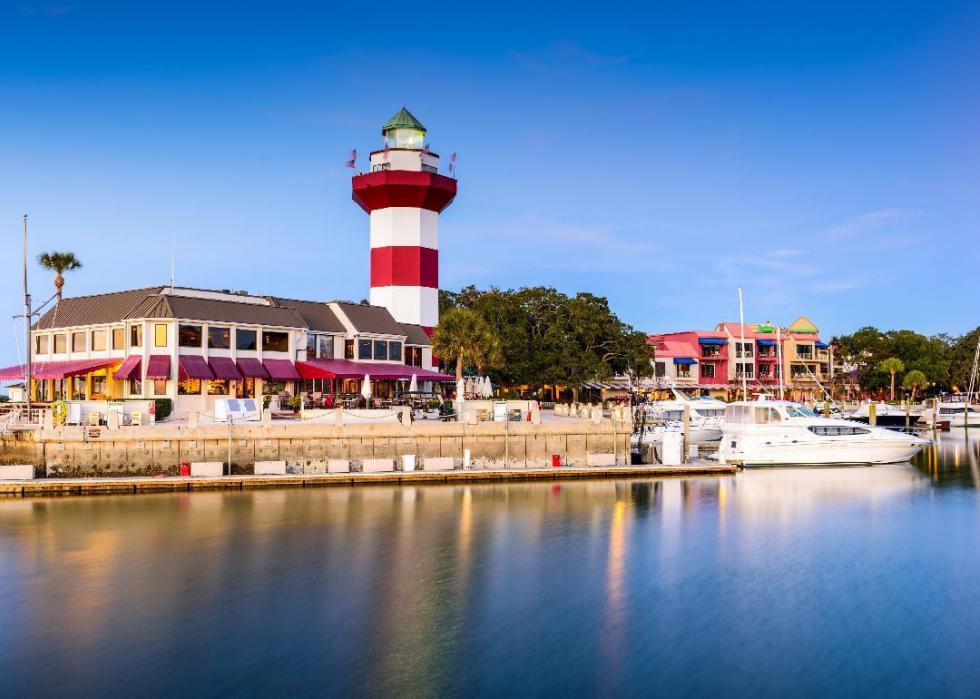
#32. South Carolina (tie)
- Total score: 0.50
- Renting population: 1,473,765
- Last updated: July 2, 2020
- More information and policy descriptions
- Policies implemented:
--- Housing stabilization
South Carolina's housing stabilization efforts include a $600 rent subsidy to qualifying residents, but the state hasn't taken the full step of freezing rent payments. At a median monthly rent of $1,245, South Carolinians pay a little more per month in rent than residents of their sister state to the north.

#32. New Hampshire (tie)
- Total score: 0.50
- Renting population: 329,259
- Last updated: July 19, 2020
- More information and policy descriptions
- Policies implemented:
--- Housing stabilization
New Hampshire was one of the country’s leading states in terms of eviction-prevention policies, but several significant initiatives expired in July. The state’s most important remaining provision is called the Housing Relief Program, which provides both short-term rental assistance to struggling households and one-time assistance grants to help cover deferred rent. The state’s median monthly rent is $1,591.

#32. Mississippi (tie)
- Total score: 0.50
- Renting population: 915,762
- Last updated: June 29, 2020
- More information and policy descriptions
- Policies implemented:
--- Housing stabilization
Mississippi has allocated $8 million to help cover rent payments for eligible Mississippians who were laid off or suffered another financial hardship during the COVID-19 crisis. One of the eight least expensive states in the country for rent, Mississippi has a median rent of just $986 per month.

#32. Oklahoma (tie)
- Total score: 0.50
- Renting population: 1,270,040
- Last updated: June 24, 2020
- More information and policy descriptions
- Policies implemented:
--- Housing stabilization
Oklahoma’s unique housing stabilization plan includes $10 million in funding that nonprofits can use to make payments directly to landlords—up to $3,600—on behalf of tenants who qualify. With a median monthly rent of just $894, Oklahoma is one of the most inexpensive states in America for renters.

#32. Utah (tie)
- Total score: 0.50
- Renting population: 824,044
- Last updated: June 17, 2020
- More information and policy descriptions
- Policies implemented:
--- Housing stabilization
Utah’s eviction moratorium expired in May, but the state has authorized the Department of Workforce Services to provide rental assistance to residents who lost their jobs but don’t qualify for unemployment benefits. The payments go up to $1,500 a month, which is a good chunk of change in a state where the median monthly rent is $1,441.
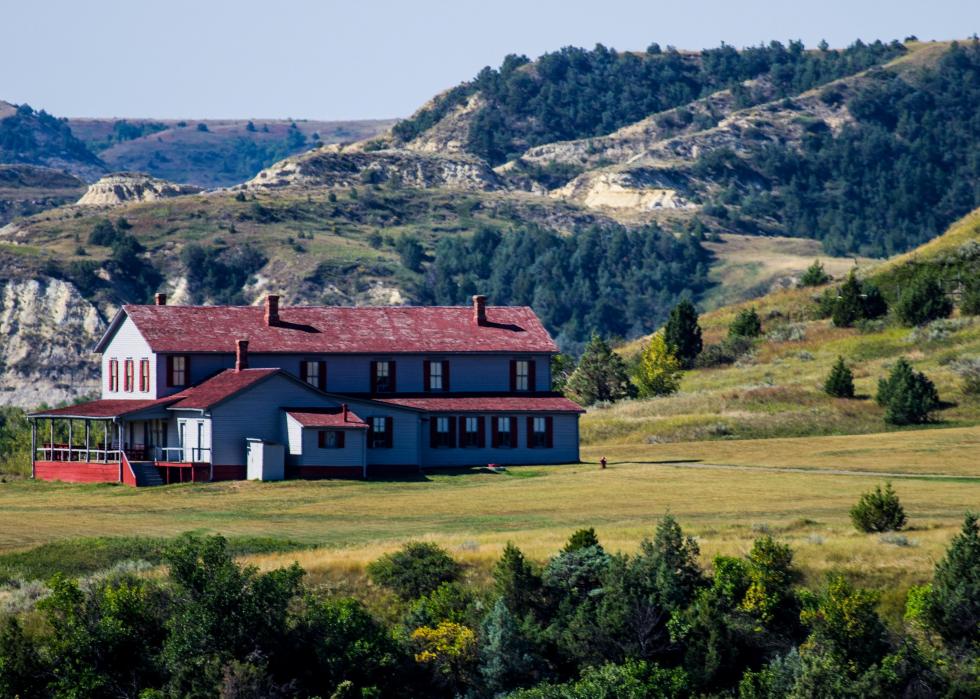
#32. North Dakota (tie)
- Total score: 0.50
- Renting population: 235,766
- Last updated: May 27, 2020
- More information and policy descriptions
- Policies implemented:
--- Housing stabilization
North Dakota's housing stabilization program is called the COVID-19 Emergency Rent Bridge. The program assists renters who lost a job and now earn less than 60% of the local median income due to the COVID-19 crisis. The median monthly rent in the state is just into the four-figure range at $1,006.

#29. Virginia (tie)
- Total score: 0.50
- Renting population: 2,646,746
- Last updated: July 2, 2020
- More information and policy descriptions
- Policies implemented:
--- No utility disconnection
--- Housing stabilization
Virginia’s governor allocated $50 million out of the state’s CARES Act fund to be distributed to eligible households that are struggling to make either rent or mortgage payments. Essential funding since—at $1,606 a month—Virginia has one of the country’s higher median monthly rents.

#29. Rhode Island (tie)
- Total score: 0.50
- Renting population: 365,613
- Last updated: June 24, 2020
- More information and policy descriptions
- Policies implemented:
--- No utility disconnection
--- Housing stabilization
Some low-income Rhode Island residents whose living situations make them vulnerable to homelessness are eligible for grants of up to $5,000 as part of the state’s $6.5 million housing stabilization fund. The median monthly rent is $1,443 in the state.

#29. Iowa (tie)
- Total score: 0.50
- Renting population: 790,918
- Last updated: May 28, 2020
- More information and policy descriptions
- Policies implemented:
--- No utility disconnection
--- Housing stabilization
In Iowa, the median monthly rent is just $941—tenants in only three states pay less. Renters in Iowa who demonstrate vulnerability to eviction can become eligible for up to four months in rental assistance.

#28. Wisconsin (tie)
- Total score: 0.50
- Renting population: 1,678,088
- Last updated: July 27, 2020
- More information and policy descriptions
- Policies implemented:
--- No utility disconnection
--- Free utility reconnection
--- Housing stabilization
Wisconsin—with a median monthly rent of $1,115—created a housing stabilization program that offers eligible renters up to $3,000. Recipients can use the money to pay both rent and security deposits.

#27. New Mexico
- Total score: 0.53
- Renting population: 638,056
- Last updated: April 28, 2020
- More information and policy descriptions
- Policies implemented:
--- No removal if tenant has COVID-19 hardship
--- No removal of tenant for nonpayment
--- No utility disconnection
Even though New Mexico doesn't have a housing stabilization program, it's the first state on this list to break away from the pack of states tied at .50. This is due to a court order that stayed eviction judgments for any state resident either suffering from a COVID-19-related financial hardship or who can demonstrate an inability to pay rent for any reason. In New Mexico, the median monthly rent is $1,169.

#25. Michigan (tie)
- Total score: 0.58
- Renting population: 2,585,932
- Last updated: July 16, 2020
- More information and policy descriptions
- Policies implemented:
--- Deadlines extended or tolled
--- Housing stabilization
Not only did Michigan toll its deadlines for the entirety of the emergency, but it also launched the Eviction Diversion Program, which offers payments to landlords provided they agree not to evict tenants during the COVID-19 crisis. The median monthly rent in the state is $1,196.

#25. Ohio (tie)
- Total score: 0.58
- Renting population: 3,545,527
- Last updated: April 19, 2020
- More information and policy descriptions
- Policies implemented:
--- Deadlines extended or tolled
--- Housing stabilization
The Ohio Housing Finance Agency agreed to provide as much as $5 million toward programs for low-income and homeless Ohioans. The funds will be allocated to nine different regional planning bodies who will distribute the money through programs like rental assistance. Situated toward the more inexpensive end of state rental prices, Ohio’s median rent is $1,033 per month.

#24. Colorado
- Total score: 0.63
- Renting population: 1,789,202
- Last updated: July 14, 2020
- More information and policy descriptions
- Policies implemented:
--- No late fees
--- No utility disconnection
--- Free utility reconnection
--- Housing stabilization
In Colorado, where the median monthly rent is $1,751, $19.65 million in direct housing assistance was allocated not by executive order or through the courts but through legislation. Additional funds are also available for legal representation and utility payment assistance, and the state made another $6 million accessible through the Disaster Emergency Fund for rental and mortgage assistance.

#23. Alaska
- Total score: 0.75
- Renting population: 237,900
- Last updated: July 2, 2020
- More information and policy descriptions
- Policies implemented:
--- Foreclosure moratorium
--- Housing stabilization
The Alaska Housing Relief Program gives eligible low-income renters and homeowners $1,200, provided they lost income as part of the COVID-19 crisis. The median monthly rent in the state is $1,529.

#22. Maryland
- Total score: 0.90
- Renting population: 1,831,677
- Last updated: May 26, 2020
- More information and policy descriptions
- Policies implemented:
--- Hearings suspended
--- Moratorium extends past emergency declaration
--- Judgments of possession stayed
--- Deadlines extended or tolled
--- No utility disconnection
--- Foreclosure moratorium
Despite the lack of a housing stabilization program, Maryland—with a median monthly rent of $1,674—squeaks into the top half of this list. This is primarily due to the fact that the state has instituted enough reforms—including the high-impact post-emergency declaration moratorium—to provide substantial financial relief to a variety of struggling renters.
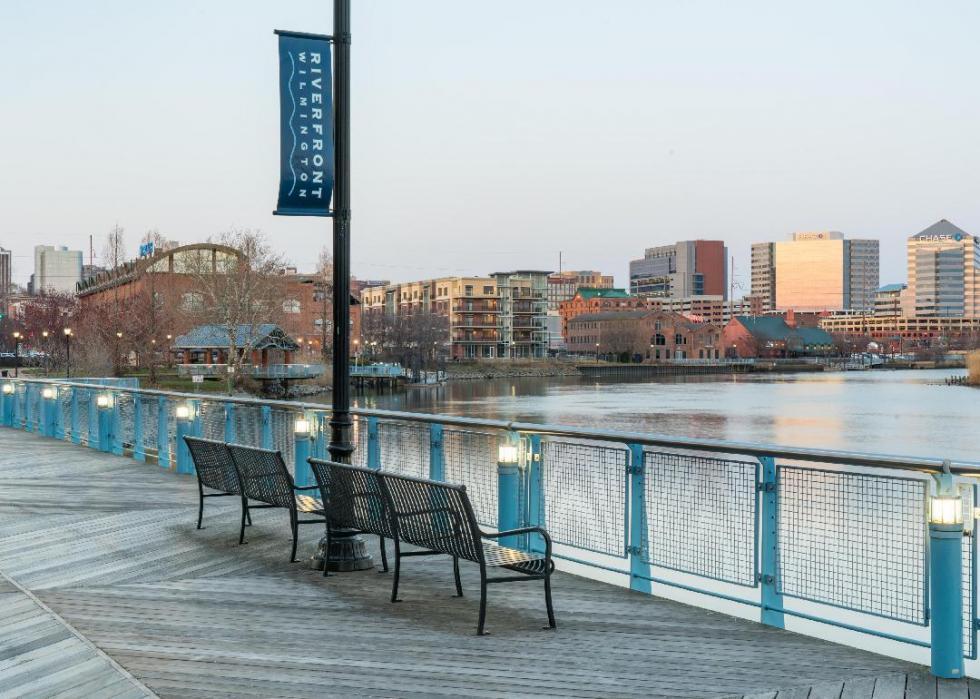
#21. Delaware
- Total score: 1.08
- Renting population: 259,631
- Last updated: July 8, 2020
- More information and policy descriptions
- Policies implemented:
--- Moratorium extends past emergency declaration
--- No late fees
--- Deadlines extended or tolled
--- No utility disconnection
--- Foreclosure moratorium
--- Housing stabilization
Delaware is the first state on the list to earn at least a full point on the scoring system thanks to a strong combination of protections, including three high-impact policies. Among the most important is a housing stabilization program that provides as much as $1,500 to renters who are struggling to pay because of the COVID-19 crisis. The median monthly rent in the state is $1,373.

#20. Indiana
- Total score: 1.15
- Renting population: 1,855,681
- Last updated: July 14, 2020
- More information and policy descriptions
- Policies implemented:
--- No notice to quit
--- No utility disconnection
--- Foreclosure moratorium
--- Housing stabilization
Indiana’s governor set aside $25 million in CARES Act funding to help with rent payments for individuals who qualify. Although that’s the state’s only high-impact policy, the governor has also ordered landlords not to issue eviction notices through the remainder of the COVID-19 crisis. The typical renter in the state pays a median of $1,031 per month.

#19. Montana
- Total score: 1.33
- Renting population: 305,301
- Last updated: June 3, 2020
- More information and policy descriptions
- Policies implemented:
--- No removal if tenant has COVID-19 hardship
--- No filing if tenant has COVID-19 hardship
--- Housing stabilization
Montana’s Emergency Housing Assistance Program provides monthly direct-to-landlord assistance payments to struggling families with one or more children under age 18. Although payments are recurring, families must demonstrate need each month. The median rent in Montana will set a tenant back $1,268 per month.

#18. Arizona
- Total score: 1.40
- Renting population: 2,462,278
- Last updated: July 16, 2020
- More information and policy descriptions
- Policies implemented:
--- No removal if tenant has COVID-19 hardship
--- No filing if tenant has COVID-19 hardship
--- Deadlines extended or tolled
--- Housing stabilization
Arizona’s Rental Eviction Prevention Assistance Program was funded with $5 million when it began in March. The program provides assistance to struggling renters who lost income due to the COVID-19 pandemic. The median monthly rent in the state is $1,375.

#17. Florida
- Total score: 1.58
- Renting population: 7,157,164
- Last updated: July 31, 2020
- More information and policy descriptions
- Policies implemented:
--- No removal if tenant has COVID-19 hardship
--- No filing if tenant has COVID-19 hardship
--- Foreclosure moratorium
--- Housing stabilization
In Florida, where the median monthly rent is $1,620, the governor has set aside $120 million in CARES Act funding for the state's housing stabilization program. The initiative provides rent subsidies to renters struggling from pandemic-related hardships.

#16. New York
- Total score: 1.63
- Renting population: 8,207,322
- Last updated: July 20, 2020
- More information and policy descriptions
- Policies implemented:
--- Hearings suspended
--- No removal if tenant has COVID-19 hardship
--- No late fees
--- Judgments of possession stayed
--- Deadlines extended or tolled
--- No utility disconnection
--- Foreclosure moratorium
--- Housing stabilization
At $2,221 per month, New York is one of only five states with a median monthly rent above $2,000 and the fourth most expensive state on the list. The Empire State’s COVID Rent Relief Program provides a one-time payment to struggling renters who lost income as a result of the pandemic.

#15. Maine
- Total score: 1.70
- Renting population: 315,084
- Last updated: May 5, 2020
- More information and policy descriptions
- Policies implemented:
--- Hearings suspended
--- No removal if tenant has COVID-19 hardship
--- Moratorium extends past emergency declaration
--- No removal of tenant for nonpayment
--- No utility disconnection
--- Foreclosure moratorium
--- Housing stabilization
Initially funded with $5 million, the MaineHousing COVID-19 Rent Relief Program provides a one-time payment of up to $500 for qualifying Mainers who can’t afford to pay rent. That covers only a little more than one-third of the median monthly rent of $1,436 for the typical renter.

#14. California
- Total score: 1.80
- Renting population: 17,035,151
- Last updated: April 19, 2020
- More information and policy descriptions
- Policies implemented:
--- Hearings suspended
--- No removal if tenant has COVID-19 hardship
--- Moratorium extends past emergency declaration
--- No filing if tenant has COVID-19 hardship
--- Deadlines extended or tolled
--- No utility disconnection
--- Foreclosure moratorium
With a median monthly rent of $2,542, Californians endure the highest rent of any residents in America. Unlike most states on this part of the list, the Golden State has not launched a housing stabilization plan. It does, however, count two high-impact protections among its more than half a dozen pro-renter policies.

#13. New Jersey
- Total score: 2.08
- Renting population: 2,924,825
- Last updated: July 20, 2020
- More information and policy descriptions
- Policies implemented:
--- Hearings suspended
--- No removal if tenant has COVID-19 hardship
--- Moratorium extends past emergency declaration
--- Judgments of possession stayed
--- No removal of tenant for nonpayment
--- No removal of tenant, except emergencies
--- No utility disconnection
--- Foreclosure moratorium
--- Housing stabilization
New Jersey’s median monthly rent of $1,837 places it among the top six most expensive states for rental housing in America. The state’s $100 million housing stabilization fund provides assistance to any renter who can’t pay for housing either because of the pandemic or for any reason beyond the control of the household.

#12. Hawaii
- Total score: 2.35
- Renting population: 540,198
- Last updated: July 8, 2020
- More information and policy descriptions
- Policies implemented:
--- No notice to quit
--- No removal if tenant has COVID-19 hardship
--- No filing if tenant has COVID-19 hardship
--- No filing for nonpayment
--- No removal of tenant for nonpayment
--- No removal of tenant, except emergencies
--- No utility disconnection
--- Free utility reconnection
Only the second state on this list with a score above the two-point barrier, Hawaii, like California, does not have a housing stabilization plan. The governor, however, issued an executive order suspending all laws dealing with evictions. The typical renter in Hawaii pays a median rent of $2,333 per month, making Hawaii the third most expensive state for rental properties in America, behind only California and Washington D.C.

#11. Vermont
- Total score: 2.48
- Renting population: 157,514
- Last updated: July 27, 2020
- More information and policy descriptions
- Policies implemented:
--- No notice to quit
--- Hearings suspended
--- No removal if tenant has COVID-19 hardship
--- Moratorium extends past emergency declaration
--- Judgments of possession stayed
--- No removal of tenant for nonpayment
--- No removal of tenant, except emergencies
--- No utility disconnection
--- Foreclosure moratorium
--- Housing stabilization
Vermont—with a median monthly rent of $1,668—checks off more than 10 boxes in terms of possible renter-protection programs. Among them is a housing stabilization plan that allocates $25 million in rental assistance payments to residents who suffered COVID-19-related economic hardships.

#10. Kentucky
- Total score: 2.65
- Renting population: 1,353,300
- Last updated: April 24, 2020
- More information and policy descriptions
- Policies implemented:
--- Hearings suspended
--- No removal if tenant has COVID-19 hardship
--- No filing if tenant has COVID-19 hardship
--- No filing for nonpayment
--- No filing, except emergencies
--- No removal of tenant for nonpayment
--- No removal of tenant, except emergencies
--- No utility disconnection
Kentucky is one of the rare low-rent, low-income states that rank high on this list among states with the best housing policies. Median rent is just $1,000 a month, placing Kentucky among the ten most inexpensive states in America for rental properties. Although it doesn’t have a housing stabilization plan, Kentucky’s governor ordered law enforcement to stop executing evictions, and the courts halted new eviction filings and suspended existing eviction cases.
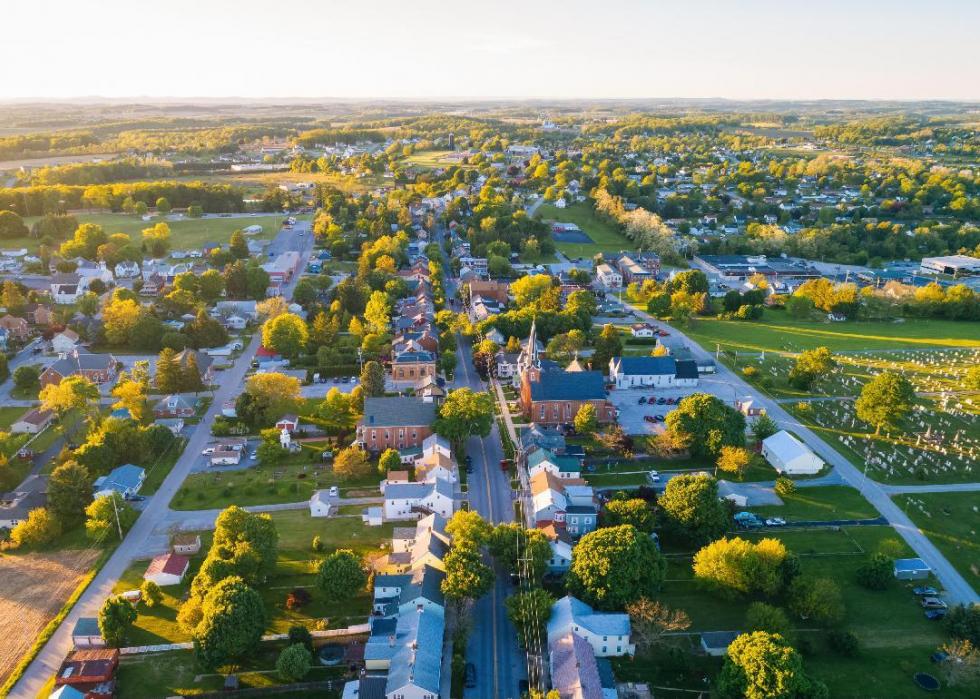
#9. Pennsylvania
- Total score: 2.88
- Renting population: 3,457,067
- Last updated: July 14, 2020
- More information and policy descriptions
- Policies implemented:
--- No notice to quit
--- Hearings suspended
--- No filing if tenant has COVID-19 hardship
--- No filing for nonpayment
--- Judgments of possession stayed
--- Deadlines extended or tolled
--- No utility disconnection
--- Foreclosure moratorium
--- Housing stabilization
In Pennsylvania, where the median monthly rent is $1,273, the state’s Housing Finance Agency is tasked with providing rent relief as part of its housing stabilization plan. The governor announced an executive order that prevents landlords from issuing eviction notices through Aug. 31.
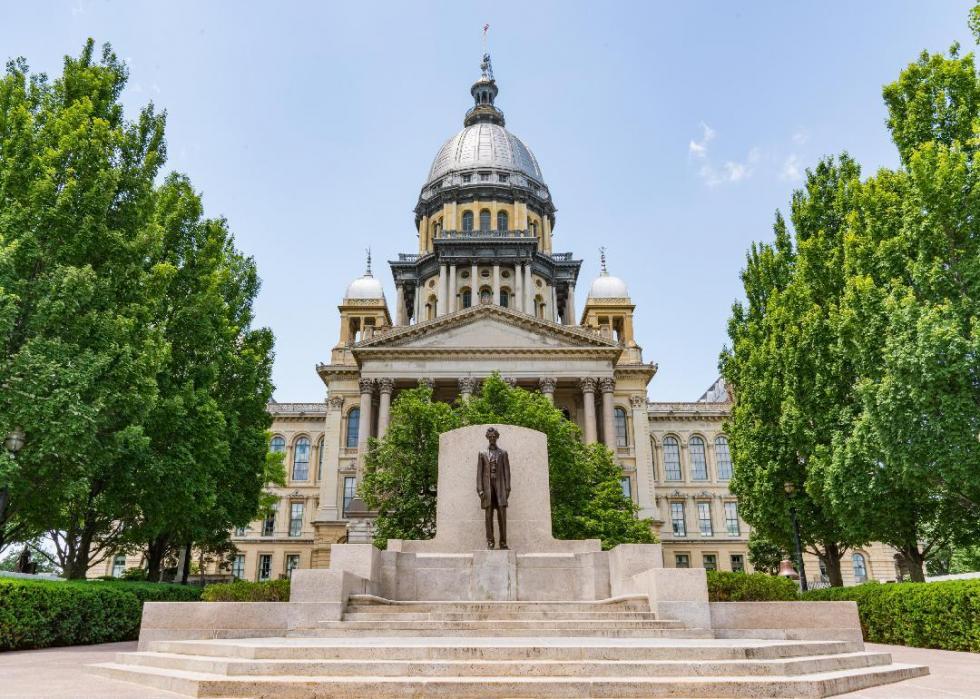
#8. Illinois
- Total score: 3.25
- Renting population: 3,920,658
- Last updated: July 27, 2020
- More information and policy descriptions
- Policies implemented:
--- No notice to quit
--- No removal if tenant has COVID-19 hardship
--- No filing if tenant has COVID-19 hardship
--- No filing for nonpayment
--- No filing, except emergencies
--- No removal of tenant for nonpayment
--- No removal of tenant, except emergencies
--- No utility disconnection
--- Free utility reconnection
--- Housing stabilization
Thanks to an executive order from the governor, no person or entity in Illinois may carry out an eviction, and law enforcement is prohibited from enforcing eviction orders. The state budget includes a hefty $396 million for rent and mortgage relief. The median monthly rent in the state is $1,563.

#7. Minnesota
- Total score: 3.53
- Renting population: 1,359,971
- Last updated: May 7, 2020
- More information and policy descriptions
- Policies implemented:
--- No notice to quit
--- Hearings suspended
--- No removal if tenant has COVID-19 hardship
--- No filing if tenant has COVID-19 hardship
--- No filing for nonpayment
--- No filing, except emergencies
--- No removal of tenant for nonpayment
--- No removal of tenant, except emergencies
--- Foreclosure moratorium
With a median monthly rent of $1,409, Minnesota is the first state to break the 3.5-point barrier even though it doesn't have a housing stabilization plan. Both the state's governor and Supreme Court prohibited any person or entity from filing, processing, or executing any eviction orders, making the state's protections among the strictest in the country.
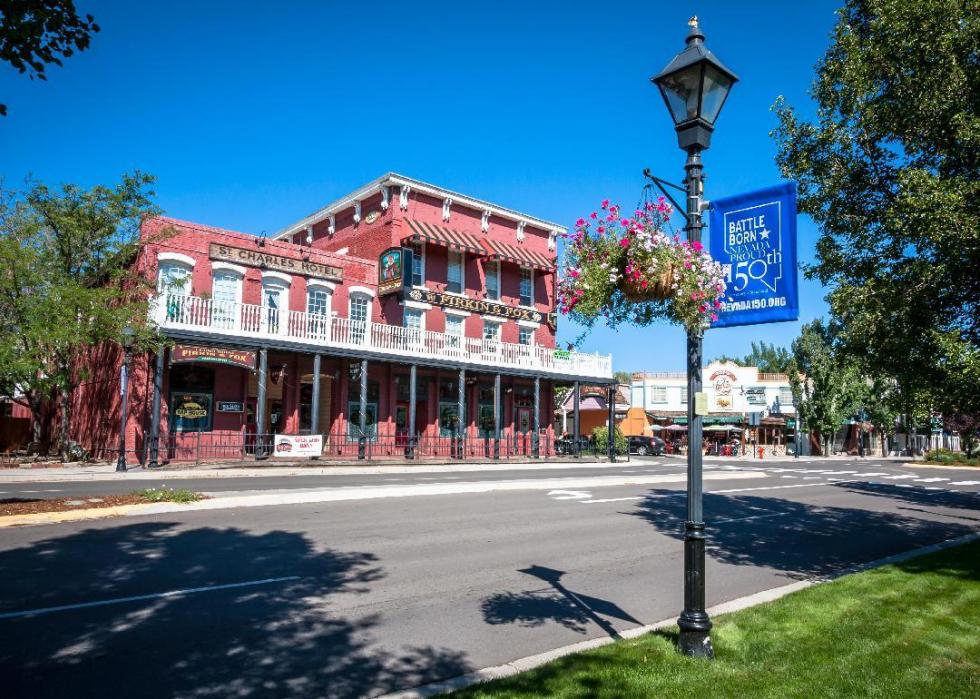
#6. Nevada
- Total score: 3.55
- Renting population: 1,254,199
- Last updated: July 2, 2020
- More information and policy descriptions
- Policies implemented:
--- No notice to quit
--- Hearings suspended
--- No late fees
--- No filing if tenant has COVID-19 hardship
--- No filing for nonpayment
--- No filing, except emergencies
--- Judgments of possession stayed
--- Foreclosure moratorium
--- Housing stabilization
In Nevada, where the median monthly rent is $1,380, the governor launched a $50 million statewide rental assistance program. Another $6 million in settlement funding from the Attorney General’s office will go directly to families in Nevada who need emergency rental assistance.

#5. Oregon
- Total score: 3.65
- Renting population: 1,448,791
- Last updated: July 7, 2020
- More information and policy descriptions
- Policies implemented:
--- No notice to quit
--- Hearings suspended
--- No removal if tenant has COVID-19 hardship
--- No late fees
--- No filing if tenant has COVID-19 hardship
--- No filing for nonpayment
--- No removal of tenant for nonpayment
--- Grace period to pay rent
--- No report to credit bureau
--- Foreclosure moratorium
--- Housing stabilization
In May, the Oregon Housing and Community Services agency began distributing $18.5 million to struggling tenants through 18 different state agencies. Although the program is open to anyone making up to 50% of their local median income, individuals with COVID-19-specific hardships have priority. The median monthly rent in the state is $1,559.

#4. Washington
- Total score: 3.75
- Renting population: 2,499,304
- Last updated: July 31, 2020
- More information and policy descriptions
- Policies implemented:
--- No notice to quit
--- No removal if tenant has COVID-19 hardship
--- No late fees
--- No filing if tenant has COVID-19 hardship
--- No filing for nonpayment
--- No filing, except emergencies
--- No removal of tenant for nonpayment
--- No removal of tenant, except emergencies
--- Foreclosure moratorium
--- No rent raises
--- Housing stabilization
Low-income renters and individuals at risk of homelessness are eligible for rent assistance as part of a $100 million relief program in Washington, where the median monthly rent is among the highest in the country at $1,825. It’s one of three high-impact policies in the state.

#3. Washington D.C.
- Total score: 4.00
- Renting population: 359,585
- Last updated: July 2, 2020
- More information and policy descriptions
- Policies implemented:
--- Hearings suspended
--- No removal if tenant has COVID-19 hardship
--- Moratorium extends past emergency declaration
--- No late fees
--- No filing if tenant has COVID-19 hardship
--- No filing for nonpayment
--- No filing, except emergencies
--- Judgments of possession stayed
--- Deadlines extended or tolled
--- No removal of tenant for nonpayment
--- No removal of tenant, except emergencies
--- No utility disconnection
--- Foreclosure moratorium
--- No rent raises
--- Housing stabilization
Only California has a higher median rent than Washington D.C.—renters in the nation’s capital pay $2,358 per month. With a freeze on late fees, utility shutoffs, and evictions, the District of Columbia’s housing protections are among the strongest in America. At-risk renters can apply for assistance as part of a District-wide rent-relief program totaling $6.2 million.

#2. Massachusetts
- Total score: 4.15
- Renting population: 2,214,898
- Last updated: July 22, 2020
- More information and policy descriptions
- Policies implemented:
--- No notice to quit
--- Hearings suspended
--- No removal if tenant has COVID-19 hardship
--- Moratorium extends past emergency declaration
--- No filing if tenant has COVID-19 hardship
--- No filing for nonpayment
--- No filing, except emergencies
--- Judgments of possession stayed
--- Deadlines extended or tolled
--- No removal of tenant for nonpayment
--- No removal of tenant, except emergencies
--- No utility disconnection
--- Foreclosure moratorium
--- Housing stabilization
The housing protection legislation passed by the Massachusetts legislature—which includes an eviction moratorium—lasts until October, making it one of the longest-running and most stringent protection policies in the country. Additionally, households struggling because of the pandemic are eligible for up to $4,000 through the Residential Assistance for Families in Transition (RAFT) program. The median monthly rent in the state is $2,211, making it the fifth-priciest state in America for rental properties.

#1. Connecticut
- Total score: 4.28
- Renting population: 1,057,962
- Last updated: July 27, 2020
- More information and policy descriptions
- Policies implemented:
--- No notice to quit
--- Hearings suspended
--- No removal if tenant has COVID-19 hardship
--- No late fees
--- No filing if tenant has COVID-19 hardship
--- No filing for nonpayment
--- No filing, except emergencies
--- Judgments of possession stayed
--- Deadlines extended or tolled
--- No removal of tenant for nonpayment
--- No removal of tenant, except emergencies
--- No utility disconnection
--- Grace period to pay rent
--- No report to credit bureau
--- Foreclosure moratorium
--- Housing stabilization
Connecticut—with a median monthly rent of $1,474—leads the nation in terms of protecting its renters during the COVID-19 crisis—one in four of its 16 protections are high-impact policies. An executive order bans evictions, utility shutoffs, and foreclosures, in addition to instituting a grace period for rental debt. The state has allocated $33 million in federal funding for struggling renters and also allows them to apply their security deposit to a month’s rent.



